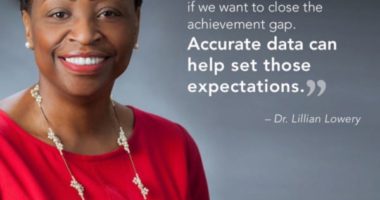New school finance data analysis shows deep inequities, but gaps in some states decreasing
(Washington, DC) – The Education Trust today released a new report documenting large funding gaps between high- and low-poverty and -minority districts in many states. The analysis reveals that, in most states, school districts that educate the greatest number of low-income and minority students receive substantially less state and local money per student than districts with the fewest low-income and minority students.
“In too many states, we see yet again that the very students who need the most, get the least,” said Kati Haycock, director of The Education Trust upon releasing the report. “At a time when schools, districts and states are rightly focusing on closing the achievement gap separating low-income and minority students from other students, states can and must do more to close these funding gaps.”
Analysis digs beneath averages to reveal gaps
Most education finance data is reported either in averages or in terms of inequities – regardless of whom those inequities affect. This analysis digs beneath both kinds of reports to get at the question of what levels of state and local funding are available for different groups of students. The Funding Gap: Low-Income and Minority Students Receive Fewer Dollars, a new study of school finance data by The Education Trust, finds that:
- Districts Serving the Greatest Number of Poor Students Get Less State and Local Money
- In 30 of 47 states studied, the quarter of districts educating the greatest number of poor students receive substantially less (i.e. a difference of $100 or more per student) state and local money per student than the quarter of districts educating the fewest poor students (see Table 1).
- Nationally, Gap Between High- and Low-Poverty Districts Shrinking But Some States Getting Worse
- The good news is that the gap has decreased in 27 states since 1997, in some cases by a substantial amount.
- Unfortunately, the gap has increased substantially (i.e. grown by more than $100/student) in 9 states over the same period (see Table 2).
- Districts Serving the Greatest Number of Minority Students Get Less State and Local Money
- In 31 of 47 states studied, districts enrolling the highest of minority students receive substantially fewer (i.e. a difference of $100 or more per student) state and local education dollars per student than districts enrolling the lowest percentages of minority students (see Table 3).
These gaps have real consequences for the quality of education low-income and minority children can receive. In New York, for example - the state with the largest funding gaps - the $2,152 per student difference by poverty enrollment translates into a whopping $860,800 difference between high- and low-poverty elementary schools of the same size (400 students each). That amount would easily be enough for the high-poverty school to compete with elite suburban schools for the most qualified teachers and also provide extra instructional time for students who are behind. Nationally, districts that educate the greatest number of poor students receive $966 less per student than low-poverty districts.
“The good news is, nationally and in some states, the gap between high- and low-poverty districts is shrinking. But overall, these data indicate clearly that those of us who are interested in ensuring that high poverty and high minority schools get the resources to help their students achieve at higher levels must urge states to do more to close their funding gaps,” Haycock continued.
What States Can Do (see pp. 12-13)
States establish the systems that fund public schools, and thus it is states that must act to close these gaps. The most common approaches are for states to reduce reliance on local property taxes by assuming a greater share of overall school funding and to heavily target poorer districts when distributing those state tax revenues. Most states now do some version of both of those things. How much the state needs to do is, of course, a function of how much inequality there is in local resources. The problem is that many dont do enough to make up for what can often be huge resource differences between poor and wealthy communities. States can and must do more.
“Twelve years ago, the nation’s governors joined with then-President Bush in setting this nation on a course toward higher standards for ’all’ students. In return for a renewed focus on the ’all’ part, this year’s No Child Left Behind Act provided high-poverty districts with additional resources. But states have to do their parts, too. In an era of high standards and ever-higher stakes, funding gaps are unconscionable,” Haycock concluded.
Methodology:
The study was conducted for The Education Trust by school finance expert Greg F. Orlofsky, who analyzed a specially-constructed data base containing demographic and finance data for over 15,000 school districts in 1999-2000, the latest year for which comparable data currently are available. The analysis, conducted during May-June 2002, used techniqu ate a measure that is more sophisticated and reliable than the raw figures included in many other studies.
This analysis includes state and local revenues only, and does not include federal dollars. It recognizes that federal dollars are intended to supplement, not supplant, tax revenues raised from stat and local sources. (For an expanded explanation of the methodology, see pp.14-15 of the report.)



